Collection of SaGa: Final Fantasy Legend (Nintendo Switch) Review
By Renan Fontes  09.06.2022
09.06.2022
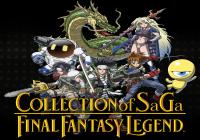
Originally localized as The Final Fantasy Legend in the West, Square's SaGa franchise was envisioned by Akitoshi Kawazu (Final Fantasy & Final Fantasy II's battle designer) as a harder counterpart to Final Fantasy proper. The first SaGa trilogy consisted of three turn-based RPGs for the Game Boy, all of which dealing with mankind's relationship with the divine, while encouraging heavy party customisation. The Final Fantasy Legend styles itself as a spiritual successor to Final Fantasy II, by including a dynamic leveling-up system, but the original trilogy also takes cues from Dragon Quest III's party mechanic to offer players plenty of gameplay variety. While not all three RPGs stand on equal footing, Collection of SaGa: Final Fantasy Legend is the best way of revisiting the genesis of one of Square's most legendary franchises.
As a compilation, Collection of SaGa: Final Fantasy Legend does little to sweeten the deal of purchasing the original SaGa trilogy. All three titles emulate the green tint standard to original Game Boy games, with no option for alternative colour palettes (doubly disappointing considering just how many different colour schemes the Game Boy Color and Super Game Boy offered by design). English and Japanese are the only language options - there are eight mostly garish background wallpapers to choose from, and the in-game screen comes in two sizes. It's not that these features are bad, just basic.
For what it's worth, they do make for a smoother playing experience. The inclusion of a virtual gamepad allows for touch controls while the Switch is undocked. The virtual pad's location can even be moved for player convenience. Screen settings can be swapped between horizontal and vertical (better replicating the original Game Boy's screen), and controls are surprisingly customisable. The only real standout addition is a turbo mode, which notably speeds up gameplay without distorting any audio. While a minor quality-of-life feature in the grand scheme of things, being able to speed up combat cuts down on time spent grinding significantly.
It's important not to expect much beyond the three titles when it comes to Collection of SaGa, but fortunately all three RPGs are worth at least one playthrough - especially from a historical context. Final Fantasy Legend is an extension of Final Fantasy II's legacy specifically, setting an important foundation for the rest of the franchise. While each entry in the collection varies in quality, they are a key part of Square's ludography, and all have their own unique charm to them.
The original Final Fantasy Legend released at the tail end of 1989, was designed to be a harder counterpart to Final Fantasy that catered towards shorter playthroughs (six to eight hours). Unlike a traditional RPG or entry in the series, SaGa's progression system takes cues from the dynamic leveling present in FFII, albeit with some key tweaks. After picking the main hero's class, players are free to create the rest of their party at the Guild before setting forth on their adventure proper. Character customisation is simple, but surprisingly in-depth for the era and if nothing else engaging.
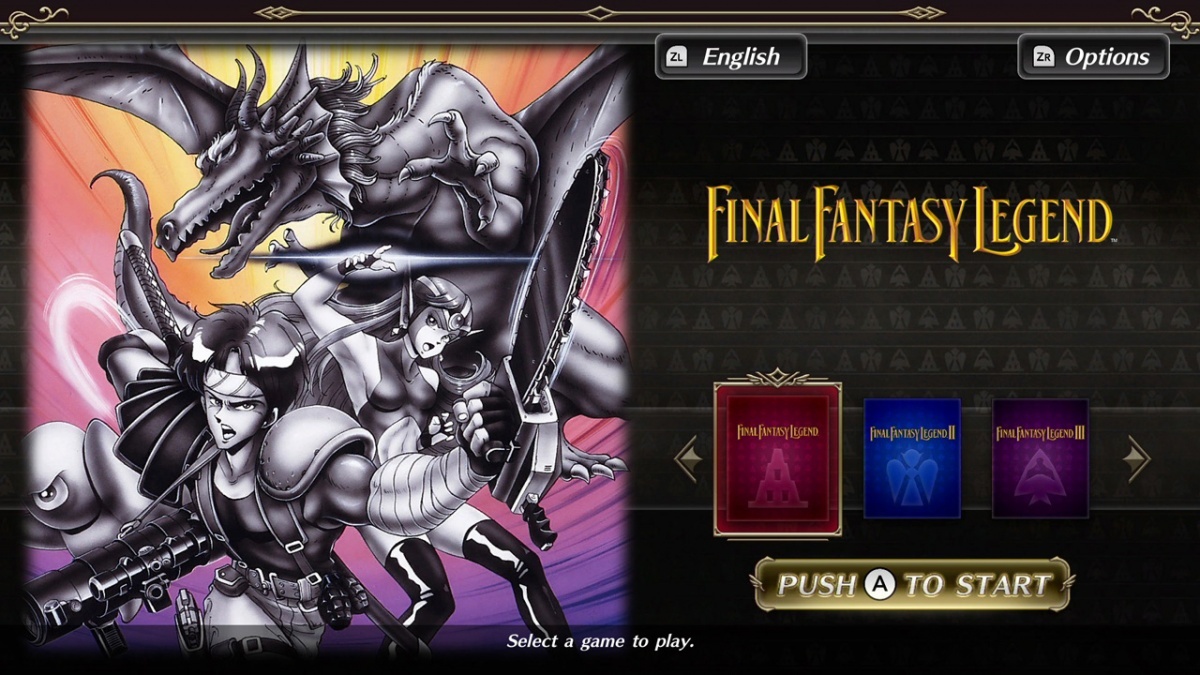
Party members are broken down into three distinct classes: Humans, Mutants, and Monsters. Both Humans and Mutants can be Male or Female, while Monsters come in a variety of forms. Humans can equip all kinds of gear and need to use items to increase their stats, but are otherwise traditional JRPG party members. Mutants work off of Final Fantasy II's dynamic leveling-up system where stats raise through gameplay. Not just that, Mutants learn random skills through gameplay, giving them a wide range of buffs, debuffs, or spells. Monsters don't gain stats, but transform through eating dropped meat in-battle. This makes Monsters constantly evolving party members who have the potential to be the best or worst character on the team at any given moment. Monsters are even more randomised than Mutants, ultimately having access to multiple weapons and spells as an inherent part of their skill set.
Interestingly, every party member (save for the protagonist) can only be knocked out three times before they're permanently dead. This mechanic is unique to the first Legend, replaced in the sequels for traditional unlimited revives. Item management plays a role throughout the whole trilogy, with all three titles sporting limited inventories. For the first entry, players need to contend with a shared eight slot inventory and individual item bags for each party member. Humans are the only characters who can freely make use of all their slots, Mutants need to share item space with spells, and Monsters have a fixed inventory that can't be edited.
There's also a level of resource management at play due to weapon durability and spell casts. Legend takes after the original Final Fantasy on NES magic-wise. Instead of MP, spells have a total amount of casts that can only be restored by resting (ala Dungeons & Dragons), adding a level of inherent strategy to using Mutants or Monsters. Similarly, weapons have durability and will eventually break after too much use. The game design discourages mindless grinding, punishing players with broken equipment in the long run. It's important to be mindful of what party members are attacking with and always ready to restock at a local shop.
Unlike Final Fantasy or Dragon Quest where shops are usually one-and-done deals after the newest equipment has been purchased, Legend demands players spend money to make money - regularly returning to stores for new equipment. Naturally, this lends the title a more robust gold economy than its contemporaries, ensuring that money functions as a pivotal resource from start to finish. This goes double due to how leveling-up works for Humans. While Mutants will increase their stats naturally through battle and Monsters can simply eat meat to transform, Humans need to rely on a series of Items to level up: MUSCLE, AGILITY, and the HP series of drinks.
MUSCLE, AGILITY, and HP200/400/600 can be purchased in most towns, while being comparatively inexpensive. MUSCLE raises a Human's Strength, AGILITY raises their Agility, and the HP drinks increase total health depending on the party member's max HP. HP200 will keep increasing health by a dramatic degree until a Human has over 200 HP, with HP400 and 600 running on the same logic. It should be noted that the only way to raise a Human's Defence is by equipping armour, and they won't be naturally raising their Mana. More importantly, Agility functions as an attack and speed stat. Certain weapons scale with either STR or AGI, encouraging soft builds throughout the adventure.
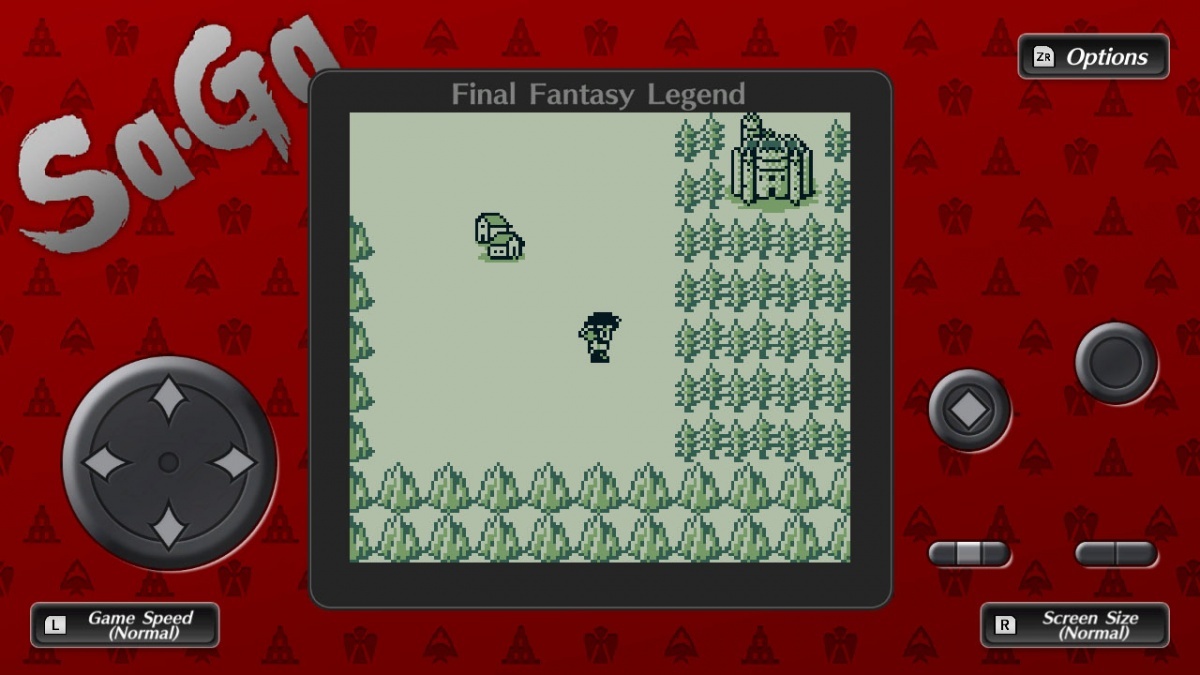
Battles are turn-based and can be quite dangerous for the unprepared. There's no auto-targeting after an enemy is killed, so it's important that party members aren't all attacking the same target. An annoyingly high encounter rate makes battles a frequent occurrence (often just mere seconds or steps after one another), quickly draining resources, spells, or durability. There's no shame in running, and it's even advised for some of the tougher dungeons just to save on HP or magic. Enemies may not reward experience, but they drop Gold for Humans to spend on items, help Mutants raise their stats innately, and become meat for Monsters after being defeated.
Most enemies also target the player in large waves, drawing battles out, while incentivising strategic play. Bosses are surprisingly easy, all things considered, but random encounters are lethal and arguably only get harder by the end of the story. The main premise sees the protagonist using the power of a mystical Sphere to scale a Tower that connects their four Worlds together: the World of Continent, World of Ocean, World of Sky, and World of Ruins. Each area is atmospherically distinct, gradually featuring harder enemies. Each World has its own Sphere to find, which in turn unlocks the next set of floors in the Tower. The Tower itself is the RPG's central dungeon (visited multiple times), and is home to some of the hardest encounters in-game.
Unfortunately, Final Fantasy Legend's world design is better on paper than it is in execution. Dungeons are aggressively mediocre, with little visual variety, often meandering and featuring dead ends that waste the player's time (with few meaningful treasures to actually find). The saving grace is the level-based world design, in which each major area has its own narrative and gameplay arc, where the party members are otherwise left to their own devices. While dungeons may be lacking, the overworld is exploratory enough to get the job done, and the Tower doesn't start to run into any hiccups until the very end.
That said, towns have their own frustrations to contend with despite their simple design. Poor NPC AI means non-playable characters will be regularly running into players or blocking their path. Although this isn't unusual for RPGs of its era, NPCs instantly trigger dialogue when making contact with the player - regardless of who bumped into who. This makes it jarringly easy to get locked in a dialogue loop. Worse is if the party visits a dungeon too early, and all the enemies are still NPCs. Not only will there be random encounters to contend with, but aggressive dialogue boxes and uncontrollably sporadic movement. It's really a minor flaw, but one that leaves a lasting impression.
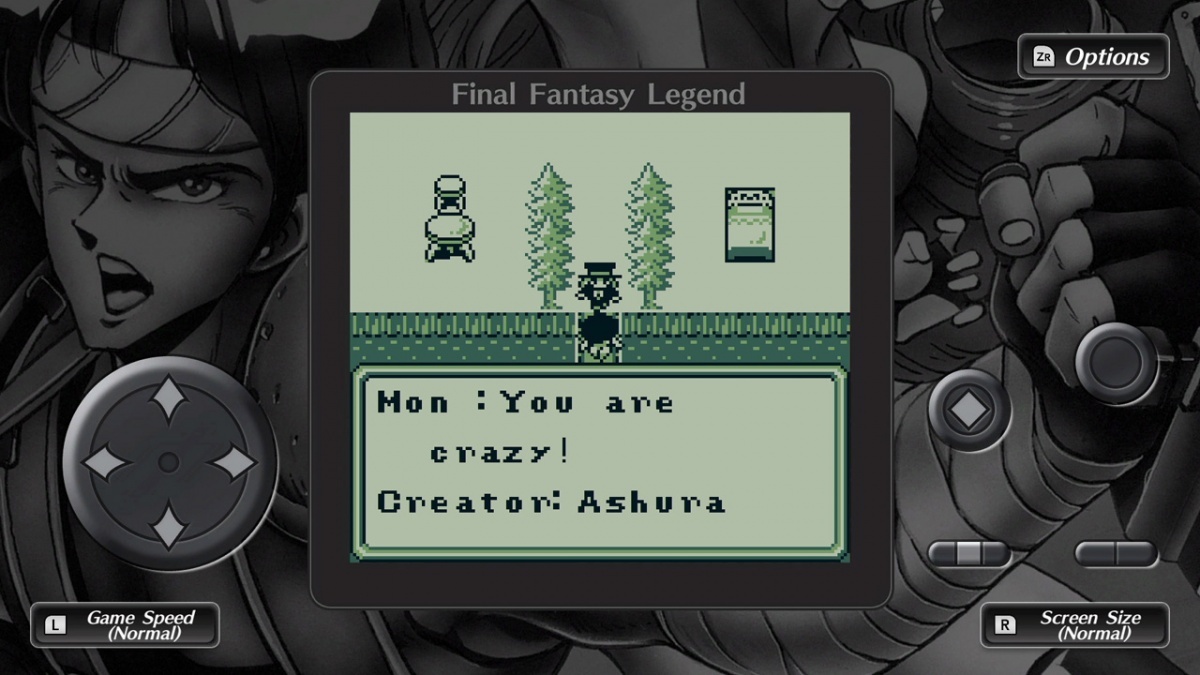
In spite of a weak translation that holds the script back considerably, there's a charm to FFL's story. Characters are one-note, but everyone in the party is set to speak at certain points, lending key scenes some personality. NPCs are hardly memorable, but they help flesh out their eclectic worlds. The narrative is ultimately a hodgepodge of ideas mashed together that shouldn't work - starting an adventure in an Arthurian kingdom only to end it in a post-apocalyptic Tokyo is a hard sell - but it's all held together with a stunning amount of charisma. Swift pacing also makes it easy to overlook the plot's shortcomings as the emphasis is mostly on the spirit of adventure (and a surprisingly impactful late-game shift that brings God into play).
Aside from its fantastic soundtrack, Final Fantasy Legend is a very unpolished RPG. Core mechanics aren't clearly conveyed in-game, the localisation just barely reads like a first draft, and the encounter rate becomes a genuine chore long before the credits roll. All the same, this is a charming start for the SaGa franchise, and brisk pacing makes it very easy to get lost in the gameplay loop. The first Legend warrants at least one playthrough (as unrefined as it is), but mainly so audiences can better appreciate all of the improvement made in the sequel.
Final Fantasy Legend II released just one year after its predecessor in Japan, developed to iron out the entirety of the original SaGa's kinks. Character customisation is notably more robust thanks to some sensible gameplay changes, and the addition of an extra class. For Humans and Mutants, stat leveling is now based on whatever each party member's last action was in battle. Humans can use strength weapons to potentially raise STR or agility weapons for AGI, while Mutants can raise MANA by using spells. Similarly, defending with a shield has the chance of raising DEF - though it is much easier done for Mutants than Humans. The harder the enemies, the higher the chance someone's stats will increase - pushing parties away from grinding too much early on.
Humans aren't as easy to power-level as in the first Legend, but this just makes stat ups all the more noteworthy. They're also the most reliable party members to build, since they don't have to contend with any randomness outside of their stats. Grinding will be necessary, but normal gameplay keeps Humans growing at a reasonable pace. Like before, Humans have the only fully customisable inventory - able to equip and wield whatever they want. Curiously, the lack of MUSCLE and AGILITY means Humans can't comfortably raise both STR and AGI. It's important to pick a main stat and stick with it since the alternative is even more grinding.
Mutants have been refined all around, but are more or less the same. Their stats function off the same system as Humans, albeit raising at a much slower pace. In this sense, Mutants aren't nearly as overpowered anymore, but they're one of the easiest classes to consistently use. Randomised abilities are back, but it's now possible to save spells by rearranging their placement in a Mutant's inventory. The limited inventory due to spells also forces Mutants to compromise when it comes to weapons or armour, adding a greater sense of player input to character building. Monsters don't undergo any major changes - still transforming by eating meat to change their stats and skill set - but there are more options at play thanks to greater enemy variety. Boss meat also offers noticeable and regular buffs over the course of the journey.
Topping off the class list is the newly included Robot. Unlike the rest of the party, a Robot's stats are tied exclusively to ιτσ equipment. Not just that, Robots can equip multiple types of the same armour and actually replenish durability at Inns, although each weapon equipped has their total durability halved. Robots are naturally very cost-heavy to maintain, but any equipped weapons up their total STR or AGI while armour increases their DEF considerably. Robots lose some value late-game when Humans and Mutants start raising stats faster, but they're an extremely useful class for most of the adventure.
Players still choose their main protagonist's class at the start, but their fellow schoolmates round out the party this time around. With the dialogue system in place to ensure everyone speaks, this little bit of implied camaraderie binds the party together better than the Guild did. The Life system has been gutted as well, opting for traditional revives. Not just that, KO'd party members actually revive between battles now. This should theoretically make combat easier, but battles are hard enough on the whole where this feels like mercy more than anything else. Guest characters also rotate in and out of the party at several points. While their stats are fixed, they help with some harder segments and make use of party chat - albeit solely to direct one where to go next.
Battles remain turn-based, with auto-targeting disabled, meaning players need to stay mindful about who their party members are attacking. The encounter remain isn't as high, but it's bound to wear down players during some of the longer dungeons - especially due to a much higher (and focused) difficulty curve. There's no shame in running to save on spell casts or durability, as there are waves of enemies that are better off left unfought without multi-target weapons ανδ spells. FFLII's endgame becomes downright brutal, resulting in one of the hardest RPGs on the Game Boy. Bosses are tougher too, requiring real effort and strategy to put down.
Harder battles can mean even more grinding for stats and gold, but turbo mode at least makes the act painless - if still a bit time consuming. More importantly, most bosses and enemies can be taken down with smart gameplay above all else, so there's usually an alternative to power-leveling. All the same, the gold economy is still present enough where grinding will be necessary. Anyone repping a team with Humans and Robots will likely need to farm for gold regularly, whereas Monsters and Mutants can afford a bit of leeway. Even then, there are plenty of useful spells, weapons, and armour to purchase and general healing items (Tents, EyeDrops, Cure, etc.) are always safe to have on-hand. A larger shared inventory makes item management on a whole more manageable.
The plot once again focuses on a central Tower that connects several worlds together, but the Tower itself is no longer a proper dungeon. There aren't any battles inside, and the Tower merely serves as a means of traversing between 13 worlds. Instead of using four coloured Spheres to unlock four worlds, players must collect the 77 MAGI scattered across all the worlds. Each floor of the Tower is locked off until the party finds the required MAGI in their current world, which players can cross reference by examining the Prism MAGI. Along with being a narrative tool, MAGI can actually be equipped for several buffs. MAGI overlap (there are multiple Power, Speed, Defense MAGI for instance), but they also level-up whenever the party finds duplicates, adding flavour to character customisation.
Legend II's world design is still segmented, but far more interconnected than its predecessor (going so far as to feature light backtracking). The 13 major settings are far more unique than the original's charming four, taking players to Feudal Japan, a fascist kingdom where beauty reigns supreme, and the actual mythological Valhalla before the credits roll. The world design doubles down on the eclectic charm that defined the first Legend entry, making for a smoother experience all around. Dungeons are visually distinct and much better designed, rarely featuring dead ends without treasure to find or something interesting to see. There's also a greater degree of focus to the in-game architecture, lending most areas an important sense of scope.
Mercifully, NPCs aren't nearly as annoying and now know their place - no longer kickstarting conversations themselves. Dialogue is noticeably more relevant (and legible), while Town Bars offer consistent direction and in-game hints for a price. A greater emphasis on story helps NPCs stand out with a bit more personality, and the plot makes a point to utilize and develop a core cast outside of the main party. The main character's dad is a key member of the supporting cast, who shows up multiple points over the course of the journey, but he's not the only character like this.
The first SaGa settled on a story carried mainly by charm, and a well realized twist. SaGa 2 opts for a character driven narrative from the get-go, immediately establishing the main character's (lack of) relationship with their Dad. While lightly written, the protagonist is motivated to find their father just as much as the 77 MAGI. It's nothing particularly deep or compelling, but it's an important distinction considering how impersonable Legend's script is. The 13 worlds also help break the story down into distinct vignettes that stand alone, while still building towards the finale. The end result is a more cohesive narrative that plays out like a proper coming-of-age adventure.
It goes without saying, but Final Fantasy Legend II isn't quite as short as the original. The main quest is twice as long, and twice as engaging. The translation still needs work, the encounter rate is still high, and the pacing isn't quite as strong, but Final Fantasy Legend II is an improvement in every meaningful way. Character customisation is deeper, the story has some actual nuance, and the battle system is refined without losing any personality. SaGa 2 is one of the Game Boy's steepest uphill battles, rewarding players with an unforgettable RPG at the top.
Closing out the original SaGa trilogy, Final Fantasy Legend III released in 1991 in Japan, and sported some major changes that conformed with JRPG conventions of the era. Character creation has been nixed altogether in favour of a fixed party. While everyone can be renamed, the main team is composed of two Humans (Arthur and Sharon) along with two Mutants (Curtis and Gloria). Arthur, Curtis, and Gloria were all sent back in time from a lost future, and raised alongside Sharon in the present. As they're actual characters with some semblance of a personality, SaGa 3's cast is - if nothing else - the most developed of the first three instalments.
Guest characters return and rotate through the story periodically (often present for more time than their Legend II counterparts), but they're not nearly as useful due to how easy it is to over-level the core four - which in itself is worth mentioning: dynamic stat leveling has been completely replaced with a traditional experience system. Enemies now reward EXP upon death, and party members raise all their stats when leveling-up. This not only fundamentally changes how character progression is paced (while also downplaying an important element of party customisation), traditional leveling pairs with other adjustments to notably lower the difficulty curve.
Auto-targeting finally makes an appearance, but instead of coming off like a quality-of-life feature, it removes an essential element of thought to random encounters. Item durability is no longer present, allowing players to button-mash their way through battle without worry. Magic no longer runs off a spell cast system, with MP making its debut, and different types of magic purchased at stores similar to the original Final Fantasy. Rounded out by a death mechanic that still revives party members between battles, the difficulty curve has taken a steep nosedive.
Not every change is for the worse, however, and there are still many remnants of the first two games' identity. The encounter rate remains healthy, but has been cut down to reasonable levels. Enemies don't spawn in - as - obscenely large waves, and an Auto-Battle mechanic lets the AI take control of party members. They'll rarely ever use their best skills, but the AI is surprisingly competent and a consistent help when it comes to grinding. Presentation-wise, battles get a sizable visual overhaul. The first-person perspective has been eschewed for on-screen sprites for the party members, magic and weapons have their own unique animations, and enemies are generally more detailed.
An even larger shared inventory (and the fact items stack) downplays item management, but it's still very much in play - especially when it comes to magic. Every party member can learn every spell, but they only have 24 slots to contend with, and there are nearly 50 total spells. While randomisation was part of the fun, Legend III's reworking keeps magic customisable, and even adds some flair to character building. Magic itself is broken down into three categories: White Magic, Black Magic, and Lost Magic. White and Black Magic can both be bought in shops, whereas Lost Magic is crafted with elemental stones found over the course of the adventure.
Despite how much there is to purchase (magic or otherwise), the gold economy is severely lacking. Players can comfortably upgrade everyone's weapons and armours at each new shop without much thought. Money just isn't as important or hard to come by, especially with durability removed as a concept. Gold is earned in abundance, but never spent fast enough to put a dent in a player's wallet. Since turbo mode speeds up combat by a noticeable degree, it's easy to rack up more money than the party will ever need just through natural gameplay.
Although the main party consists of two Humans and two Mutants, it is possible to change their class through the Transformation system. Transforming has undergone a major revamp where each character's elemental affinity (Arthur/Fire, Curtis/Air, Gloria/Water, Sharon/Earth) influences what they become. Not just that, enemies drop more than meat, with robotic parts occasionally dropping in meat's place. Party members can potentially become a Beast, Robot, Cyborg, or a variety of different Monsters. All four classes have unique attributes that make them worth experimenting with, as well.
Monsters function similar to how they have up to this point, Beasts can equip weapons and armour pieces like a Monster/Human hybrid, Cyborgs rely on equipment to augment their stats, and Robots can use Capsules to power level individual stats. Non-Human and Mutant classes can also use Talents - skills that go far beyond the basic magic the party can learn - and handle normal encounters with even greater ease. It is worth pointing out that transforming isn't all too useful in the grand scheme of things, but the system is fairly customisable and adds to the overall replay value.
The world design is the most sophisticated of the trilogy, in large part due to the role of time travel. As mentioned, Arthur, Curtis, and Gloria all hail from a doomed timeline. Spending a decade training in the past, they unite with Sharon at the start of the adventure to travel through time and stop the Water Entity flooding the world. The first half of the adventure is set on a single overworld that changes throughout three distinct time periods (Past, Present, and Future), gradually becoming more flooded with each successive era - roughly 15 years according to in-game dialogue.
In the first two SaGa games, worlds were simple and relatively straightforward to navigate. SaGa 3 features a few optional dungeons and even some twists to the overworld that help keep exploration dynamic and rewarding. Dive magic lets players explore underwater (complete with an overworld that changes through time), and Float turns the party into a makeshift airship. On that note, Final Fantasy Legend III has an actual airship in the form of the Talon. What begins at the party's means of time travel eventually takes over as their all-purpose vehicle. The Talon even functions as a pseudo-sixth party member during aerial battles, always landing a pre-emptive strike.
The Talon is outfitted with Units (ostensibly Sphere/MAGI substitutes) that offer practical services, allow for different forms of travel, and change the airship's equipped weapon. Over the course of the story, the party can also recruit four crew members to staff the Talon. Each member runs their own store (item, armour, weapon, and magic), while three can craft armour, weapons, and Lost Magic for the player. The Talon also sports an Inn for quick healing, eventually functioning as the party's main hub. Around the halfway point, the party stops time-traveling and starts visiting lands outside of time, utilizing multiple set pieces that restrict the Talon's functionality.
Floatland, Pureland, and the Underworld, serve as the main settings for the back half, with Pureland standing out as the most traditional overworld in the game. Pureland is a traditional JRPG setting where the party travels from country to country, knocking down any roadblocks along the way. It features the most optional content, and ultimately functions as the last major area players explore. All four crew members are hidden throughout the world - there are hidden caves with elemental stones to collect, and it isn't exactly clear where the party needs to go next, playing into SaGa's non-linearity better than in the first half.
Dungeons are a high point both in terms of design and presentation. Tile sets are varied across different set pieces, and there's an active effort to ensure that no two dungeons look alike. There are shared assets between towns, caves, and the various overworlds, but nothing so egregious to take away from the aesthetic. The addition of a jumping mechanic and proper puzzles lend dungeons a layer of depth they were lacking previously. Players can now jump over pits or obstacles inside of dungeons. By nature, pits also add a layer of verticality where the party can drop down to the floor below if they aren't careful. Jumping skips the player across the tile they're facing, coming in handy for navigation more than once.
Block puzzles surprisingly show up in a key dungeon, requiring players to think critically about how to move the blocks in regards to the space around them. All things considered, they're clever puzzles that aren't too difficult, but still manage to offer some mental stimulation. After two RPGs that were primarily dungeon crawlers, puzzles stand out as a welcome change of pace. In general, FFLIII forces the audience to interact with their surroundings on a deeper level. While not always implemented perfectly, hidden walls pop up in a few spots to expand dungeons, and mazes start popping up in the second half to test the player's navigational skills.
Legend III puts more effort into its narrative than either of its predecessors, helping establish stakes and better contextualized dungeons while maintaining a steady pace. The party doesn't get much in the way of character development, but the world around them is as unique as the previous two Legend entries, and the script is a considerable improvement on account of Ted Woolsey serving as translator. SaGa 2 has a stronger heart through the presence of the protagonist's father, but SaGa 3 has an epic quality that keeps the plot interesting.
Ultimately, Final Fantasy Legend III is the only entry in the trilogy that feels like a Final Fantasy spin-off (for better or worse). Fans of the first two titles might find themselves put off by the more conventional mechanics, but there's still enough of the series' identity present where the shift in gears isn't too jarring at the end of the day. SaGa 3 is a black sheep that doesn't quite capture the same feel of the first two titles, but is nonetheless one of Game Boy's better JRPGs, and easily the most digestible of the trilogy - albeit not necessarily the best.
Collection of SaGa: Final Fantasy Legend may not give its entries the flourishes they deserve, but each instalment in the original trilogy brims with creativity, and gives players a staggering amount of customisation options considering the era. Neither Final Fantasy Legend I, II, or III are reflective of SaGa at its best, but they're the franchise's humble origins, and worthy additions to any RPG aficionado's collection. Collection of SaGa: Final Fantasy Legend may be an acquired taste, but it's one worth taking the plunge into.
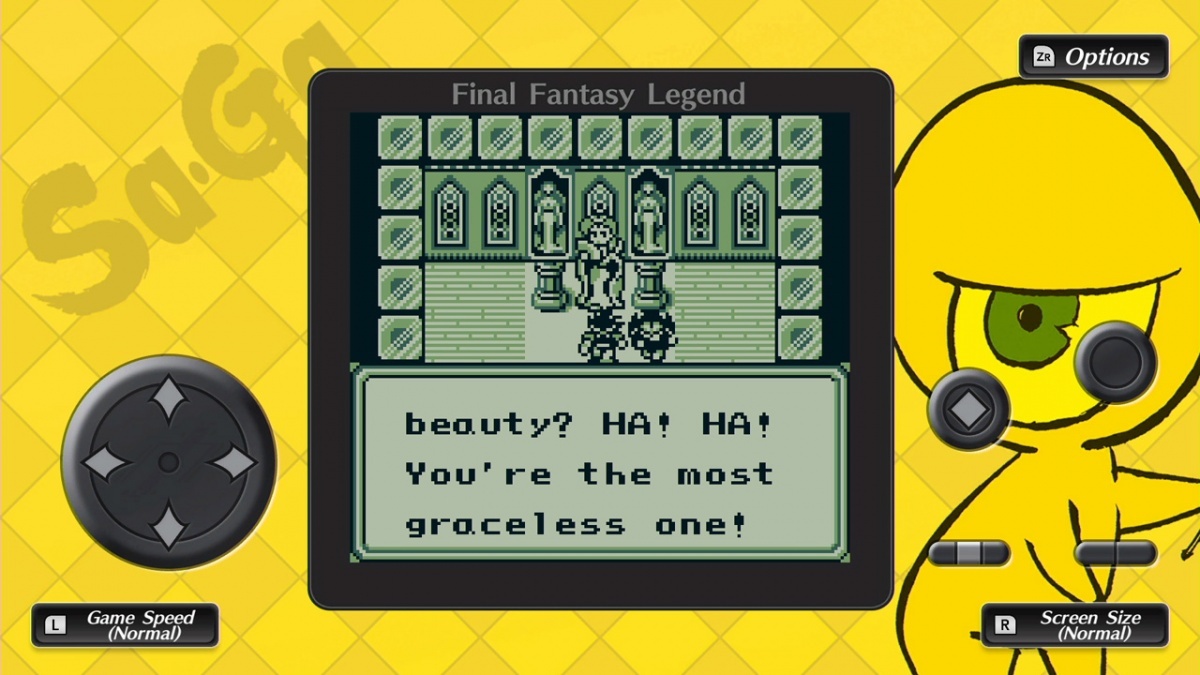
Cubed3 Rating
Very Good - Bronze Award
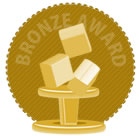
Collection of SaGa: Final Fantasy Legend doesn't do much to spruce up its titles beyond a turbo mode, but the original SaGa trilogy consists of three of Game Boy's most creative, and player driven JRPGs - all of which with their own unique identity. Legend is rough around the edges and almost has a beta quality, but its simplicity towards character customisation makes it very easy to start up a quick playthrough. Legend II expands on its predecessor everywhere it counts, featuring dynamic leveling, and a genuinely bizarre world with a lot of heart. Legend III is a conventional RPG comparatively, but it features enough oddities (nuanced character transformations and time travel) to even out into the most beginner-friendly entry in the collection. SaGa as a franchise prioritises smart battling at all times, and player driven party progression. This collection is a solid entry point into the series, and an even better dive into one of Game Boy's best trilogies.

![]() 7/10
7/10
![]() 0
(0 Votes)
0
(0 Votes)
 Out now
Out now  Out now
Out now  Out now
Out now  Out now
Out now Comments
Comments are currently disabled

 Sign In
Sign In Game Details
Game Details Subscribe to this topic
Subscribe to this topic Features
Features





 Top
Top

